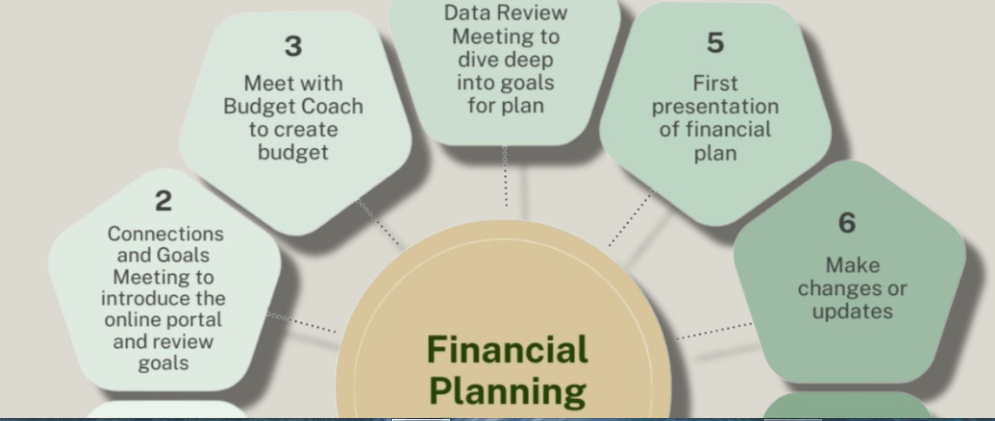How to Create a Financial Plan That Aligns with Your Life Goals
A strong financial plan is more than just saving money—it’s about aligning your finances with your life goals. Whether you want to buy a home, retire early, travel the world, or start your own business, a well-structured financial plan helps turn your dreams into reality.
In this guide, we’ll walk you through the essential steps to create a financial plan that aligns with your life goals.
1. Define Your Life Goals
Before creating a financial plan, you need to identify your short-term, mid-term, and long-term goals.
Examples of Life Goals:
✅ Short-Term (1-3 years) – Build an emergency fund, pay off debt, save for a vacation.
✅ Mid-Term (3-10 years) – Buy a home, start a business, invest in education.
✅ Long-Term (10+ years) – Retire comfortably, build generational wealth, and achieve financial independence.
📌 Action Step: Write down your goals, prioritize them, and set a target date for each one.
2. Assess Your Current Financial Situation
To create a roadmap, you need to know where you stand financially. Evaluate the following:
🔹 Income – Salary, business earnings, investments, passive income.
🔹 Expenses – Fixed costs (rent, utilities), discretionary spending (entertainment, dining out).
🔹 Savings & Investments – Emergency fund, retirement accounts, stocks, real estate.
🔹 Debts – Credit cards, student loans, mortgages, personal loans.
📌 Action Step: Track your income and expenses using budgeting tools like Mint, YNAB, or Excel spreadsheets.
3. Create a Budget That Supports Your Goals
A budget helps you manage your money effectively and ensures you allocate funds toward your goals.
The 50/30/20 Budget Rule (A Simple Approach):
🔹 50% – Needs (housing, food, transportation, insurance)
🔹 30% – Wants (entertainment, dining out, hobbies)
🔹 20% – Savings & Debt Repayment (investments, retirement, emergency fund)
💡 Adjust the percentages based on your financial situation and goals.
📌 Action Step: Use a budgeting app like YNAB or PocketGuard to monitor your spending habits.
4. Build an Emergency Fund
Unexpected expenses can derail your financial plan. An emergency fund acts as a safety net for job loss, medical bills, or urgent repairs.
How Much Should You Save?
✔ 3-6 months’ worth of living expenses in a high-yield savings account.
✔ If self-employed, aim for 6-12 months to account for income fluctuations.
📌 Action Step: Automate savings to your emergency fund to build it consistently.
5. Pay Off Debt Strategically
High-interest debt can drain your finances and delay your goals. Use a repayment strategy to eliminate it efficiently.
Debt Payoff Methods:
✅ Snowball Method – Pay off smallest debt first to gain momentum.
✅ Avalanche Method – Pay off highest-interest debt first to save more on interest.
📌 Action Step: Choose a strategy and make extra payments to accelerate debt payoff.
6. Invest for the Future
Investing allows your money to grow over time and helps you achieve long-term financial goals.
Investment Options:
📈 Retirement Accounts – 401(k), IRA, Roth IRA
🏡 Real Estate – Rental properties, REITs
📊 Stock Market – Index funds, ETFs, individual stocks
💼 Side Business – Build additional income streams
📌 Action Step: Start investing early and take advantage of compound interest.
7. Plan for Retirement
Even if retirement feels far away, planning early ensures financial security in your later years.
🔹 Maximize employer-sponsored 401(k) contributions (especially if they match).
🔹 Open an IRA or Roth IRA for additional retirement savings.
🔹 Estimate how much you need using a retirement calculator.
📌 Action Step: Set up automatic contributions to your retirement accounts.
8. Protect Your Finances with Insurance
Life is unpredictable, and insurance provides financial protection against major risks.
Essential Insurance Policies:
✔ Health Insurance – Covers medical expenses.
✔ Life Insurance – Protects your family’s financial future.
✔ Disability Insurance – Provides income if you’re unable to work.
✔ Home & Auto Insurance – Protects assets from accidents and disasters.
📌 Action Step: Review your policies annually to ensure adequate coverage.
9. Continually Review & Adjust Your Financial Plan
Your goals and financial situation will evolve over time. Regularly review and adjust your financial plan as needed.
🔹 Annually – Assess your progress toward goals.
🔹 After major life events – Marriage, having children, career changes.
🔹 Market conditions – Adjust investments based on economic trends.
📌 Action Step: Set a quarterly or yearly review date to reassess your financial plan.
Final Thoughts
Creating a financial plan that aligns with your life goals is key to financial success and personal fulfillment. By setting clear goals, managing your money wisely, and investing for the future, you can achieve financial freedom and live the life you envision.




